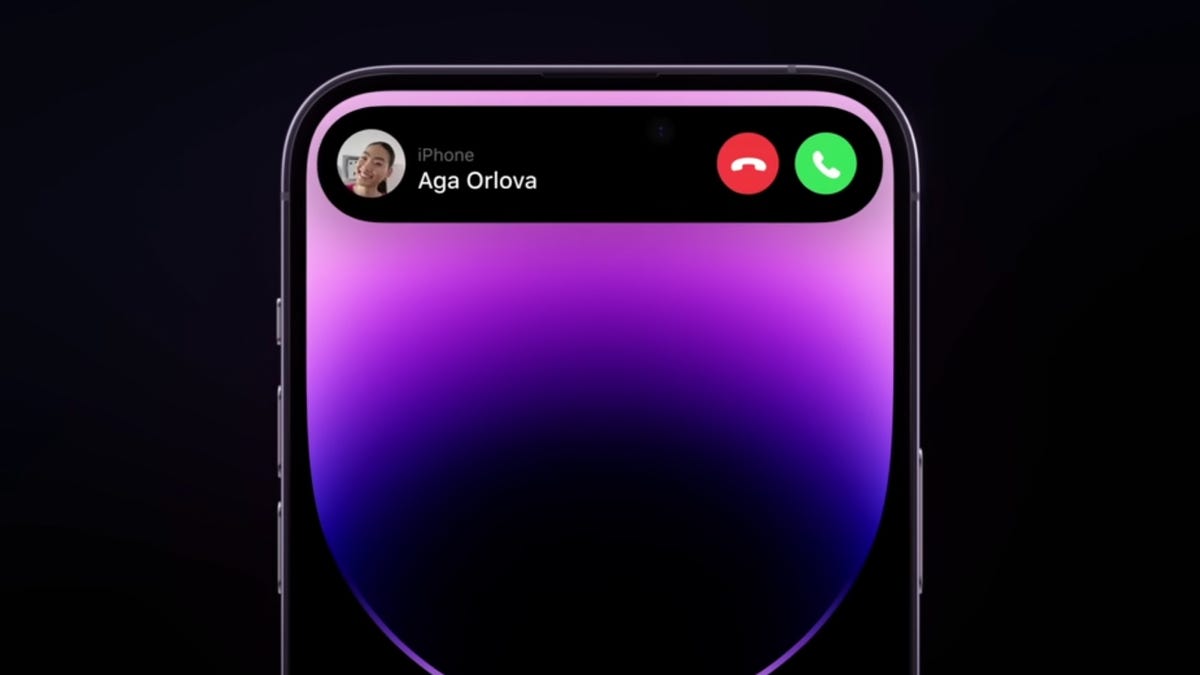I had a nightmare about Apple’s iPhone 14 Dynamic Island (so I contacted Apple)

Lovely. Unless it tumbles into the wrong hands. Apple
Admit it, you were surprised.
If you’re of an Apple-leaning persuasion, that is.
Apple’s designers and engineers looked at the most ungainly, ugly part of the iPhone screen and turned it into a swan swooping toward you with glorious, effortless elegance.
Also: iPhone 14 Pro makes the notch come alive, finally
It really was quite something. With characteristic understatement, Apple offered that its iPhone 14 Pro Dynamic Island is “a shape-shifting, multitasking, head-turning, game-changing iPhone experience.”
And there your head was, spinning at this multifarious elevation toward excitement.
But there was more: “Dynamic Island blends fun and function like never before, consolidating your notifications, alerts, and activities into one interactive place.”
“Please,” you cried. “Give me more. This is the most wonderful thing I’ve seen since Face ID.”
I was with you, of course. For the longest seconds, I stared at this cleverness and appreciated just how helpful it was.
That night, though, I had a weird nightmare. Or was it a nightmare?
I was in an inexact future. I was picking up a new iPhone 14 Pro. Suddenly, a message expanded and hurtled towards me. It was encouraging me to buy, wait, was it an AppleTV+ show? Or AirPods? Or a new washing detergent? It’s unclear to me now.
What is clear is that the Dynamic Island had become a vehicle for something not everyone adores. Or, more accurately, something for which not everyone professes adoration.
Advertising.
All this fine new movement on my iPhone screen had been usurped by commercialists. Could one of those commercialists have been Apple?
In my dream — or was it a nightmare? — advertisers were allowed to design special animations that would dynamically bloom before you and spread themselves over your phone screen.
In my nightmare — or was it a dream? — Apple was selling the idea of an exclusive advertising format — the Dynamic Isle-ad — to big brands.
There was another one swooping at my face. Was it luring me to Maalox? Or Botox? There were curious colors and shapes. The whole thing pulsated like a very bad hangover, or a very good rave.
Why were these images and ideas invading my sleep?
Could it be because Apple has been giving the impression that it’s quite interested in securing a little more advertising revenue for its burgeoning services balance sheet?
It’s clearly dented Facebook’s ability to make vastly unconscionable piles of lucre, as the nefarious company wafts around your every iPhone tap.
I woke momentarily and knew what I had to do. I contacted Apple to ask whether ads could be magically wafted across iPhone screens in some near-future time. Such as, say, a couple of weeks.
I went back to sleep and the Dynamic advertising images kept on coming. I was sure one of them was actually Jason Sudeikis whispering that I had to watch the third season of Ted Lasso or I’d have no remaining friends.
I began to talk to myself in my sleep.
“Sometimes ads can be immensely enjoyable and involving. ” I said.
“Disclosure: I get involved in them once in a while,” I replied. “It’d be an interesting creative challenge to concoct Dynamic ads that could be quite something.”
The conversation kept going.
“Let’s face it, whether you like it or not, you already get ads on your iPhone home screen,” I said. “Whether you want them or not.”
“It’s true,” I replied. “I get notifications about texts from allegedly reputable research companies. I get deeply ignorant political texts, too — ones that, just once in a while, force me to respond in direct terms. And then there are the purely sell-y or the purely scammy.”
To which I interrupted: “What if even those became a touch more creative and Apple began to somehow charge for the privilege?”
Then I woke up and looked at my email. Still no response from Apple. What was I to think?
No, Apple wouldn’t allow that sort of thing, would it?
It was just a nightmare, right?
For all the latest Technology News Click Here
For the latest news and updates, follow us on Google News.
